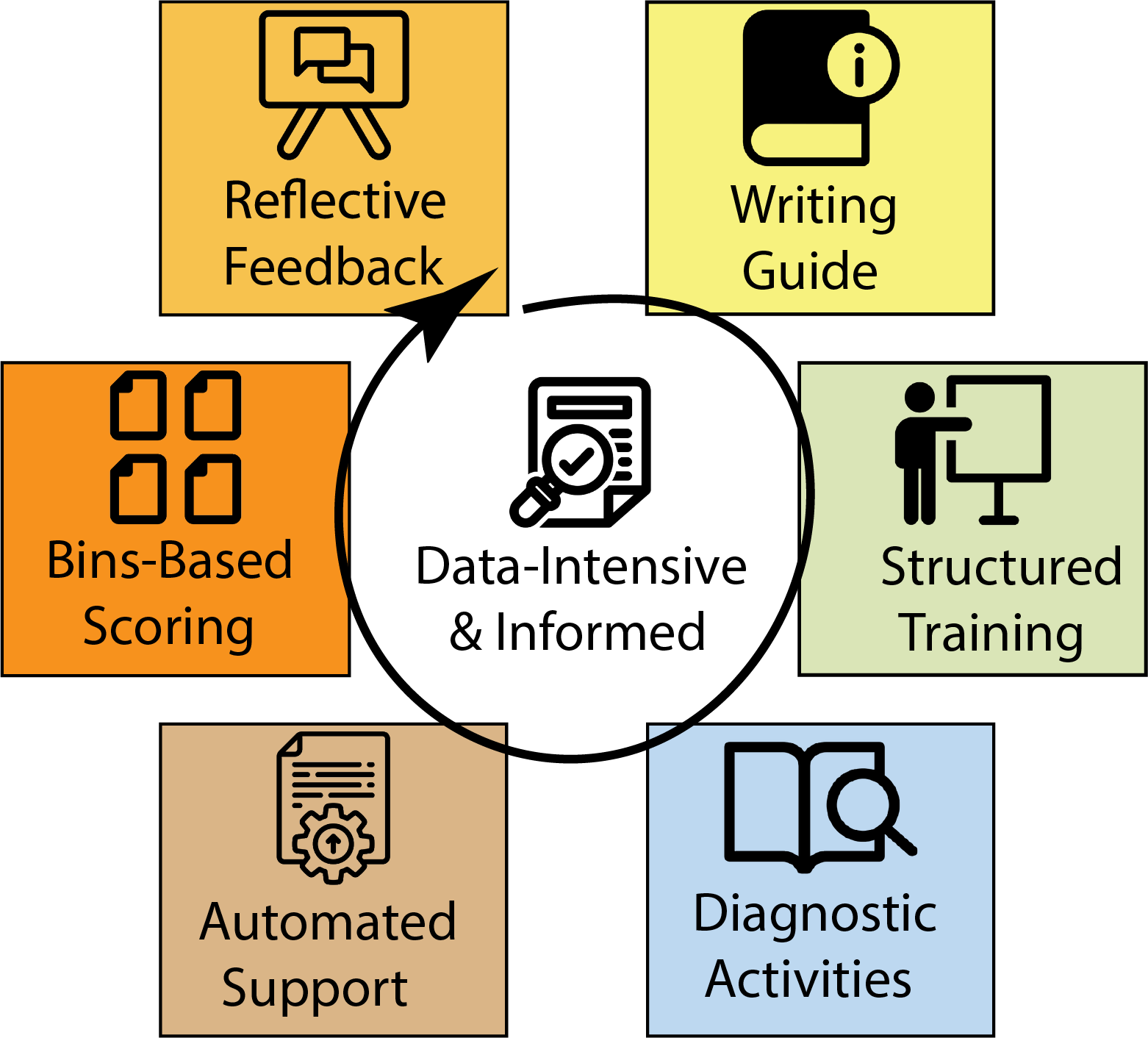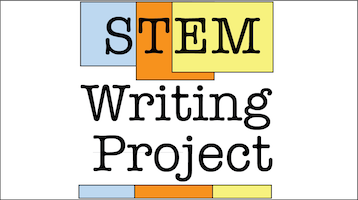STEM Writing Project
Our Approach
How We Addressed Barriers to Scientific Writing
We asked:
- How can we provide students with more opportunities to practice meaningful scientific writing?
- How do we move beyond copy editing, and provide students with tailored, meaningful feedback that builds deep transferable communication skills?
- Are these goals even possible in classes with dozens or hundreds of enrolled students?
Answering these questions led to our Six Elements Model for teaching scientific writing. SEM uses:
- An open-source Biology Writing Guide
- Structured training activities for both students and instructors
- Diagnostic activities that surface student misconceptions, so instructors can adjust the basic instructional strategy to local needs.
- Automation that both improves student outcomes, and streamlines routine data collection
- Bins-based scoring (a more authentic grading model that shifts the conversation away from "points-harvesting," and
- Reflective, coaching-oriented feedback that encourages self-correction.
Each Element helps create a data-rich environment supporting assessment of student writers over time, and constant improvement of the model.

Why Does SEM Work?
- SEM is built on WAC/WID best practices with >40 years of research behind them.
- SEM stresses training for students AND teachers. Users learn how to: 1) lead students through the instructional process, 2) use well-structured methods and rubrics, 3) provide effective, growth-oriented feedback, and 4) grade writing more consistently.
- SEM is data-rich. Many exercises produce actionable formative data about students' development as writers. Automation supports longitudinal analyses that describe how cohorts of students are improving over time.
- SEM is scalable. Multiple instructors can provide a consistent student learning experience, even in high-enrollment courses.
- SEM is adaptable. It assumes programs have different needs, and helps instructors set goals based on local data. Each of the six components can be adapted in response to collected data.
- SEM has been extensively field-tested. It has been our standard method for teaching scientific writing in BIO100-level courses for nearly 10 years. Thousands of students and more than 30 graduate TAs have been trained to teach scientific writing using SEM. We have an open-access data archive of >4400 student lab reports showing what they write when trained this way, and how their writing changes over time.
Comments
There are no comments on this entry.
